Ancient Greeks Had Great Understanding Of Weather And Climate
A. Sutherland - AncientPages.com - Ancient cultures from the Aztecs of Mesoamerica to the Egyptians in Africa and Indians in Asia —became expert astronomers and predictors of seasonal weather patterns.
Ancient world cultures associated weather forecasting with religion and spirituality. Weather such as rain, drought, wind, and cloudiness were associated with a deity, or god and were worshiped in order to ensure good weather.
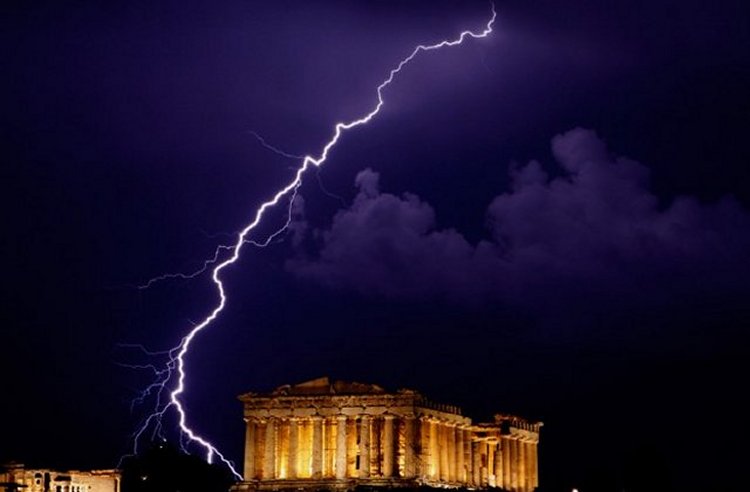
Aristotle is considered the founder of meteorology. He tried to explain the weather through the interaction of the four elements: earth, fire, air, and water.
Around 650 BC, the Babylonians tried to predict short-term weather changes based on the appearance of clouds and optical phenomena such as haloes.
By 300 BC, Chinese astronomers had developed a calendar that divided the year into 24 festivals, each festival associated with a different type of weather.
Rain gods and goddesses were particularly important, because rain influenced agriculture and construction projects. Tlaloc (Aztec), Set (Egyptian), and Indra (India), as well as Thor (Norse), Zeus (Greek), and Shango (Yoruba), are only some gods associated with rain, thunder, and lightning.
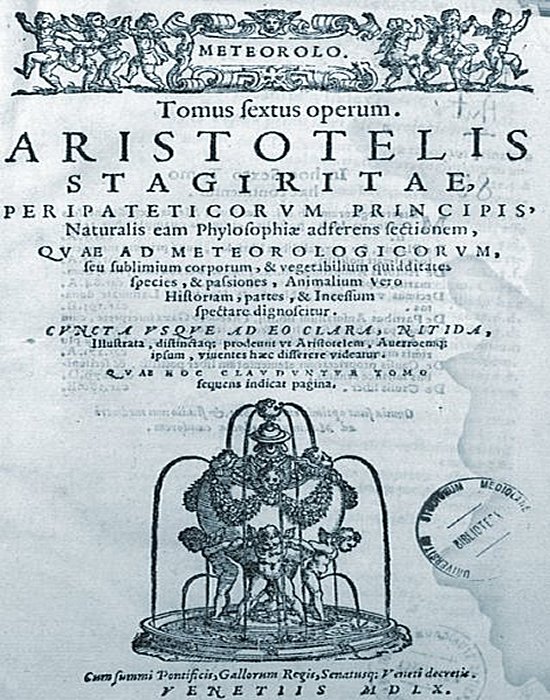
Aristotle's Meteorology is the earliest extant. Greek work on the subject, and is part of a larger project, following on from his studies of natural motion in the Physics, astronomy in On the Heavens, and the four elements in Generation and Corruption. Photo credits: wikipedia
However, it was the Greeks, who began the formal study of climate and, the word 'climate' is derived from the Greek word 'klima', meaning slope, referring to the slope or inclination and referring to the climate conditions created by the Sun’s angle. Moreover, ancient Greeks invented the term “meteorology,” the study of atmospheric disturbances.
Ancient Greeks, as well as other civilizations of that time, often attributed weather changes and natural phenomena to the gods. For example, lightning was a way for Zeus to show his anger, just as Thor in ancient Nordic mythology.
Ancient Greek mythology is an example of how early civilizations tried to explain the unexplainable at the time forces of nature, weather and astronomy.
Many ancient Greek gods and goddesses were elements of weather and seasons personified. Ancient Greeks also believed in Poseidon, god of sea and earthquakes, Helios, god of sun, Selene, goddess of moon, Hephaestus, god of volcanoes, Chione, goddess of snow, Zeus, king of all gods and god of sky, thunder, lightning and rain. All occurrences of favorable or poor weather were thought to be a direct result of godly intervention.
However, thanks to their continuous observation of nature, ancient Greeks had a great understanding of weather and climate in general. It may not have been as advanced as modern science but their basic knowledge helped them to better understand weather changes and find ways to benefit from them.
Aristotle is considered the founder of meteorology. His treatise (the oldest of all comprehensive works) known as 'Meteorology' discusses what Aristotle believed to have been all the affections common to air and water, and the kinds and parts of the earth and the affections of its parts. It includes early accounts of water evaporation, earthquakes, and other weather phenomena.
He tried to explain the weather through the interaction of the four elements: earth, fire, air, and water. Aristotle’s student Theophrastus produced the first book on weather signs, listing observations used to forecast weather, many of which are still used to this day.
In ancient Greece people used their knowledge to their advantage, focusing on the air’s movement, commonly known as wind, as well as the significance of the Sun and Moon positions in the sky in order to forecast phenomena such as tides and improve everyday tasks involving agriculture or sailing.
Written by – A. Sutherland - AncientPages.com Senior Staff Writer
Copyright © AncientPages.com All rights reserved. This material may not be published, broadcast, rewritten or redistributed in whole or part without the express written permission of AncientPages.com
Expand for referencesMore From Ancient Pages
-
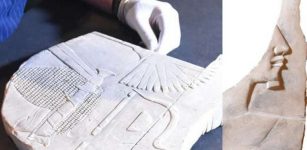 Mysterious Depiction Of Pharaoh Hatshepsut
Archaeology | May 17, 2018
Mysterious Depiction Of Pharaoh Hatshepsut
Archaeology | May 17, 2018 -
 Termessos – Where History And Mythology Marked People’s Daily Lives
Featured Stories | Mar 16, 2024
Termessos – Where History And Mythology Marked People’s Daily Lives
Featured Stories | Mar 16, 2024 -
 Puzzling Markings Carved On Ancient Artifacts Discovered In North America – Unknown Native American Tribe, Lost Civilization Or Something Else?
Civilizations | Apr 26, 2018
Puzzling Markings Carved On Ancient Artifacts Discovered In North America – Unknown Native American Tribe, Lost Civilization Or Something Else?
Civilizations | Apr 26, 2018 -
 Sole Survivor Recalls An Incredible Unexplained Mountain Mystery
Featured Stories | Aug 7, 2023
Sole Survivor Recalls An Incredible Unexplained Mountain Mystery
Featured Stories | Aug 7, 2023 -
 New Discoveries In Underwater Excavations Of Sunken Cities Of Canopus and Heracleion
Archaeology | Jul 29, 2019
New Discoveries In Underwater Excavations Of Sunken Cities Of Canopus and Heracleion
Archaeology | Jul 29, 2019 -
 Unkulunkulu: ‘Great Oldest One’ Progenitor Of Mankind, Creator Of All Things And Origin Of Death In Beliefs Of Zulu People
African Mythology | Sep 30, 2019
Unkulunkulu: ‘Great Oldest One’ Progenitor Of Mankind, Creator Of All Things And Origin Of Death In Beliefs Of Zulu People
African Mythology | Sep 30, 2019 -
 New Clues May Explain Collapse Of Ancient City Teotihuacan In Mexico
Archaeology | Sep 22, 2022
New Clues May Explain Collapse Of Ancient City Teotihuacan In Mexico
Archaeology | Sep 22, 2022 -
 Is A Gigantic Ancient City Hidden Underwater In The Bermuda Triangle?
Featured Stories | Jul 8, 2014
Is A Gigantic Ancient City Hidden Underwater In The Bermuda Triangle?
Featured Stories | Jul 8, 2014 -
 The ‘Chinese Pyramids’ And The Pole Star
Archaeology | Nov 30, 2018
The ‘Chinese Pyramids’ And The Pole Star
Archaeology | Nov 30, 2018 -
 On This Day In History: Twelfth Council Of Toledo Initiated By King Erwig – On Jan 9, 681
News | Jan 9, 2017
On This Day In History: Twelfth Council Of Toledo Initiated By King Erwig – On Jan 9, 681
News | Jan 9, 2017 -
 Aethelflaed – ‘Iron Lady Of Mercia’ Was A Brave Female Warrior Who Led Forces Against Danish Vikings
Featured Stories | Aug 2, 2019
Aethelflaed – ‘Iron Lady Of Mercia’ Was A Brave Female Warrior Who Led Forces Against Danish Vikings
Featured Stories | Aug 2, 2019 -
 Adorable Village Of The Little People In Connecticut
Featured Stories | Jul 25, 2019
Adorable Village Of The Little People In Connecticut
Featured Stories | Jul 25, 2019 -
 Ancient Egyptians Invented Toothpaste
Ancient Technology | Dec 26, 2015
Ancient Egyptians Invented Toothpaste
Ancient Technology | Dec 26, 2015 -
 Magnetic Fields Used To Explore Doggerland And Other Prehistoric Submerged Sites
Archaeology | Mar 10, 2023
Magnetic Fields Used To Explore Doggerland And Other Prehistoric Submerged Sites
Archaeology | Mar 10, 2023 -
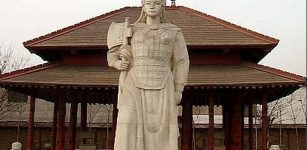 Lady Fu Hao: Brave Warrior Skilled Strategist And China’s First Female General
Featured Stories | Mar 9, 2019
Lady Fu Hao: Brave Warrior Skilled Strategist And China’s First Female General
Featured Stories | Mar 9, 2019 -
 Controversial Artifacts No One Wants To Examine Thoroughly: Is There Something We Are Afraid Of Discovering?
Ancient Technology | May 22, 2019
Controversial Artifacts No One Wants To Examine Thoroughly: Is There Something We Are Afraid Of Discovering?
Ancient Technology | May 22, 2019 -
 Pyramid Of The Moon And Avenue Of The Dead Could Be Foundation For Urban Design Of Teotihuacan
Archaeology | Jul 31, 2020
Pyramid Of The Moon And Avenue Of The Dead Could Be Foundation For Urban Design Of Teotihuacan
Archaeology | Jul 31, 2020 -
 Archaeological Evidence Of Human Presence In America 250,000 Years Ago?
Featured Stories | Mar 5, 2024
Archaeological Evidence Of Human Presence In America 250,000 Years Ago?
Featured Stories | Mar 5, 2024 -
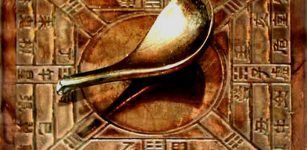 Magnetic Compass Was Invented In Ancient China
Ancient History Facts | Mar 18, 2016
Magnetic Compass Was Invented In Ancient China
Ancient History Facts | Mar 18, 2016 -
 Ancient Symbol Hamsa: It’s Meaning And History Explained
Ancient Symbols | May 20, 2020
Ancient Symbol Hamsa: It’s Meaning And History Explained
Ancient Symbols | May 20, 2020
